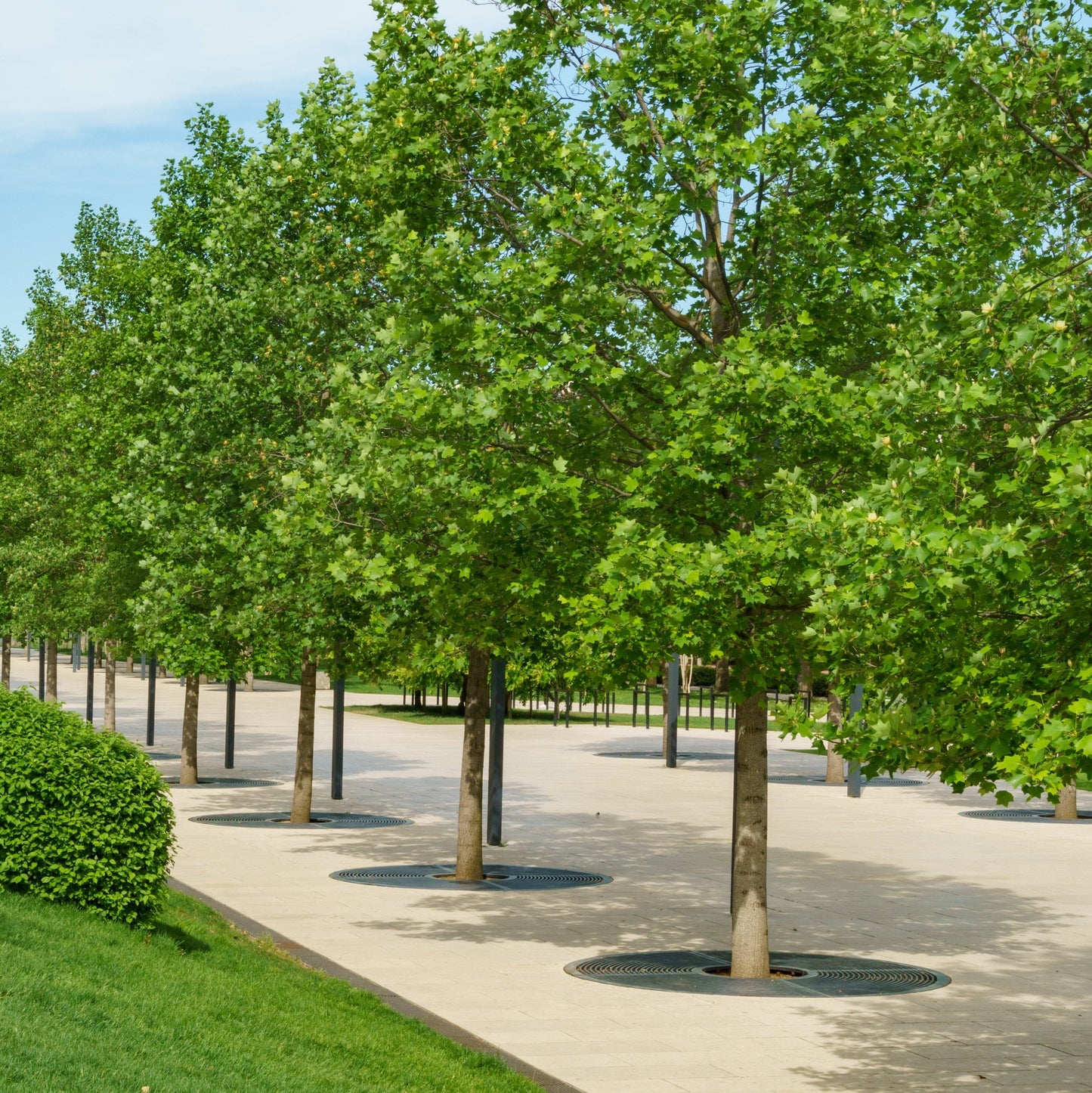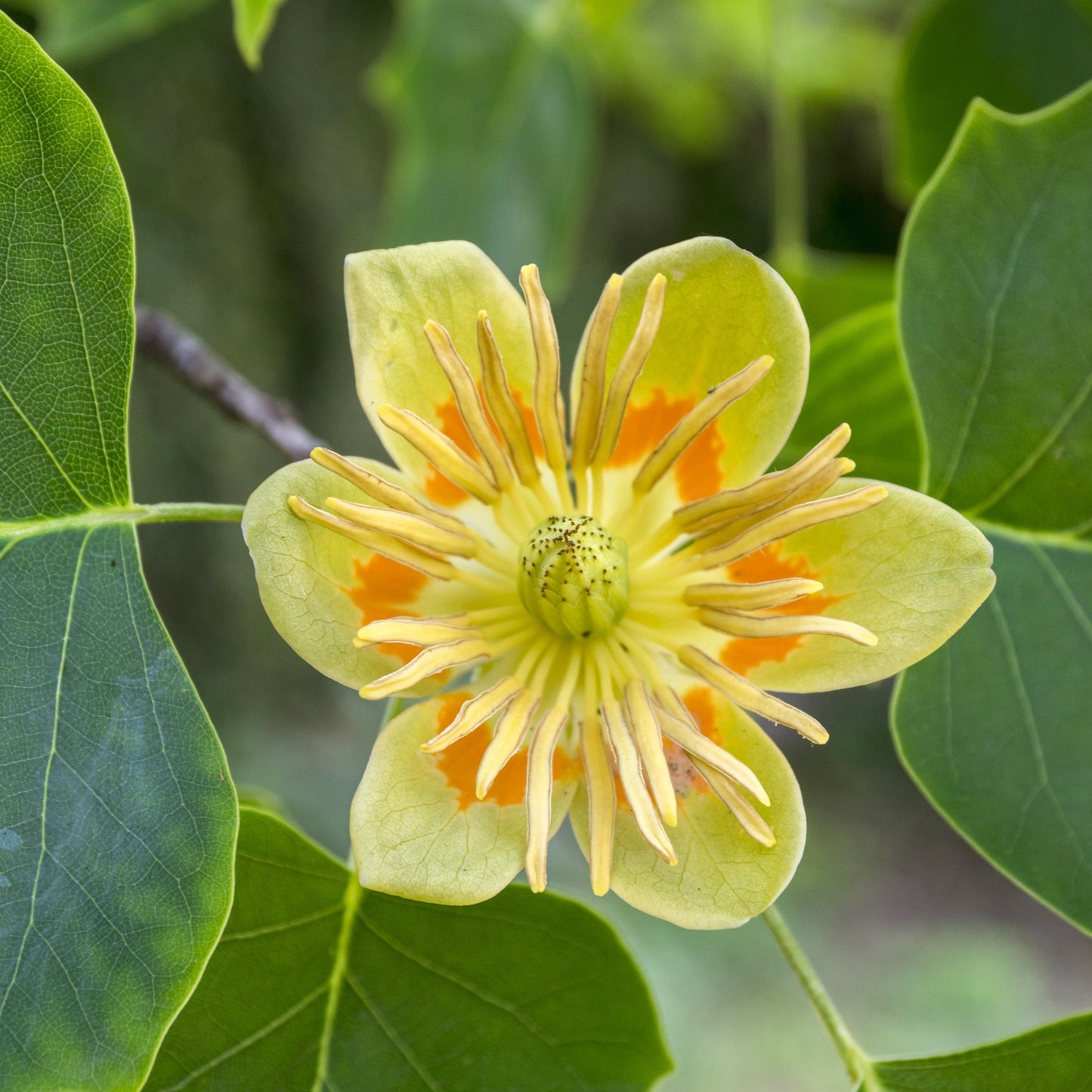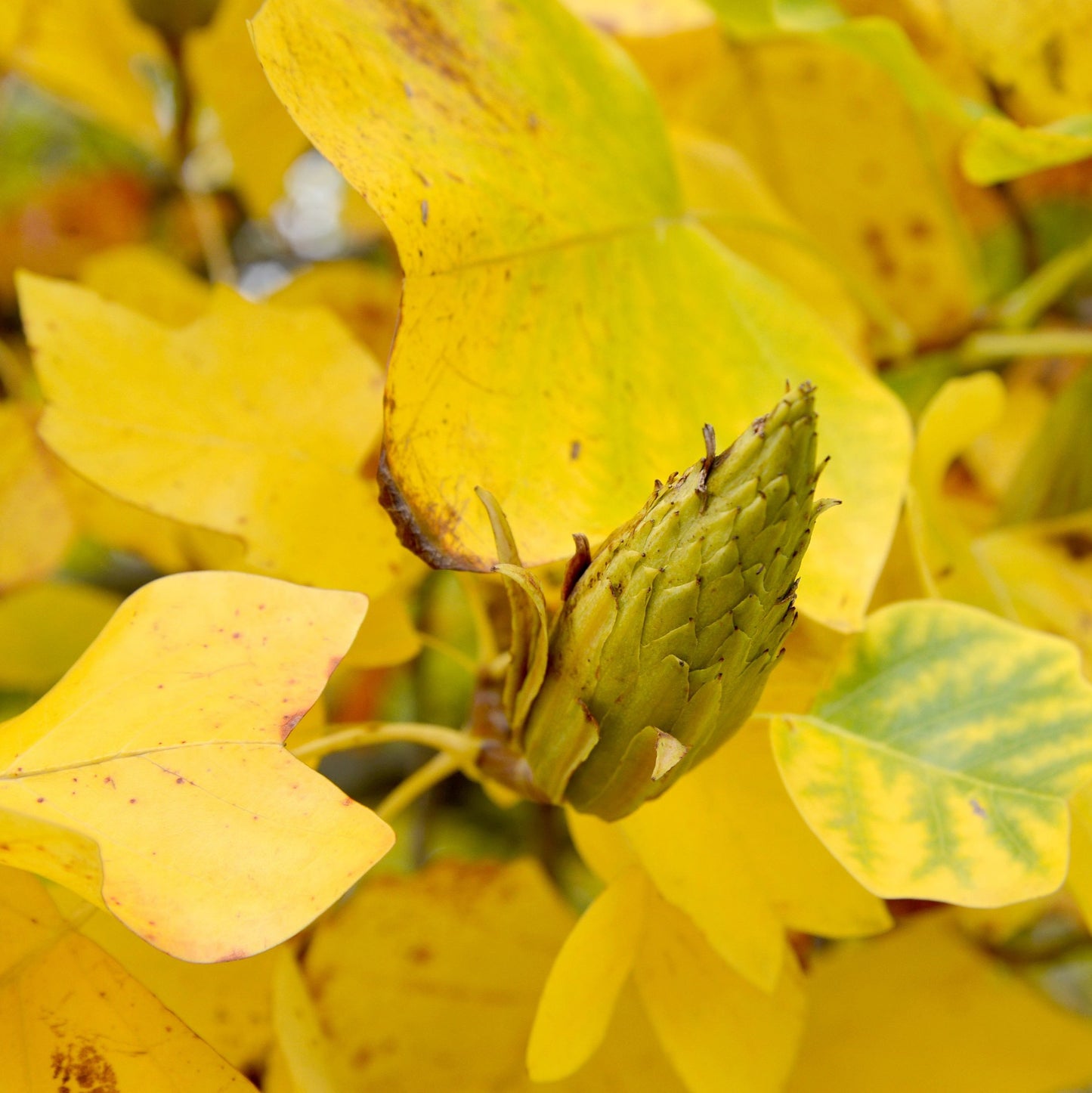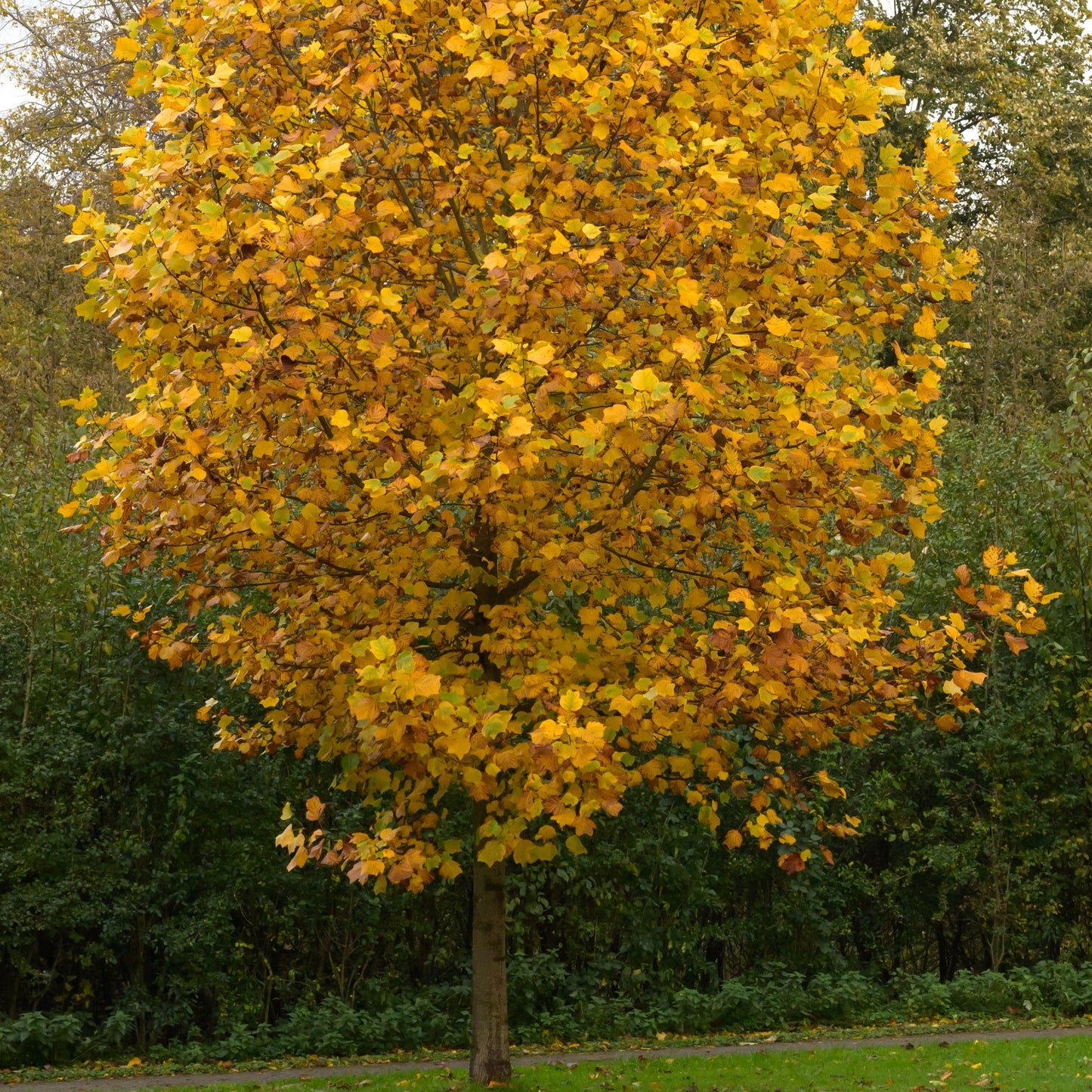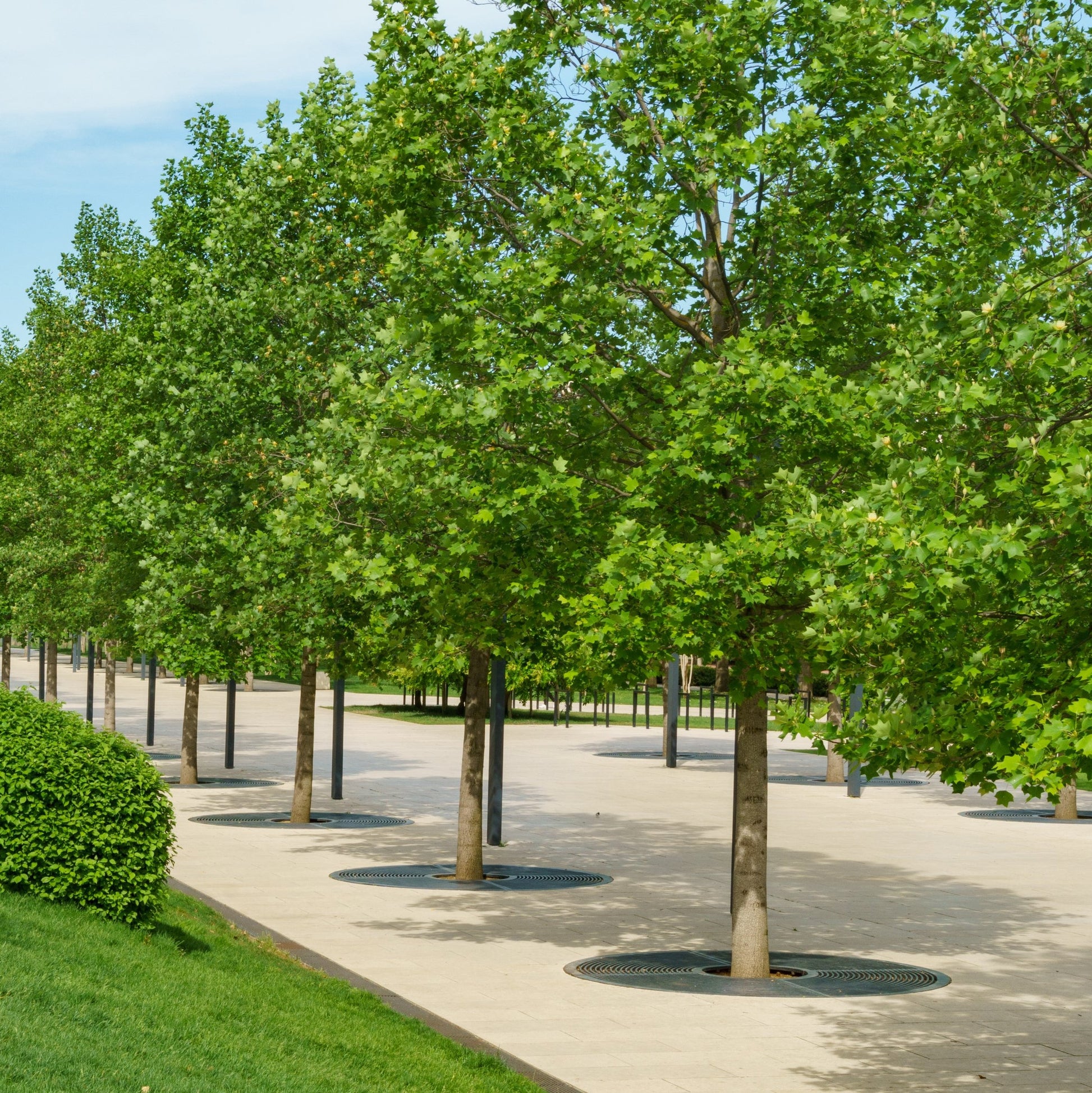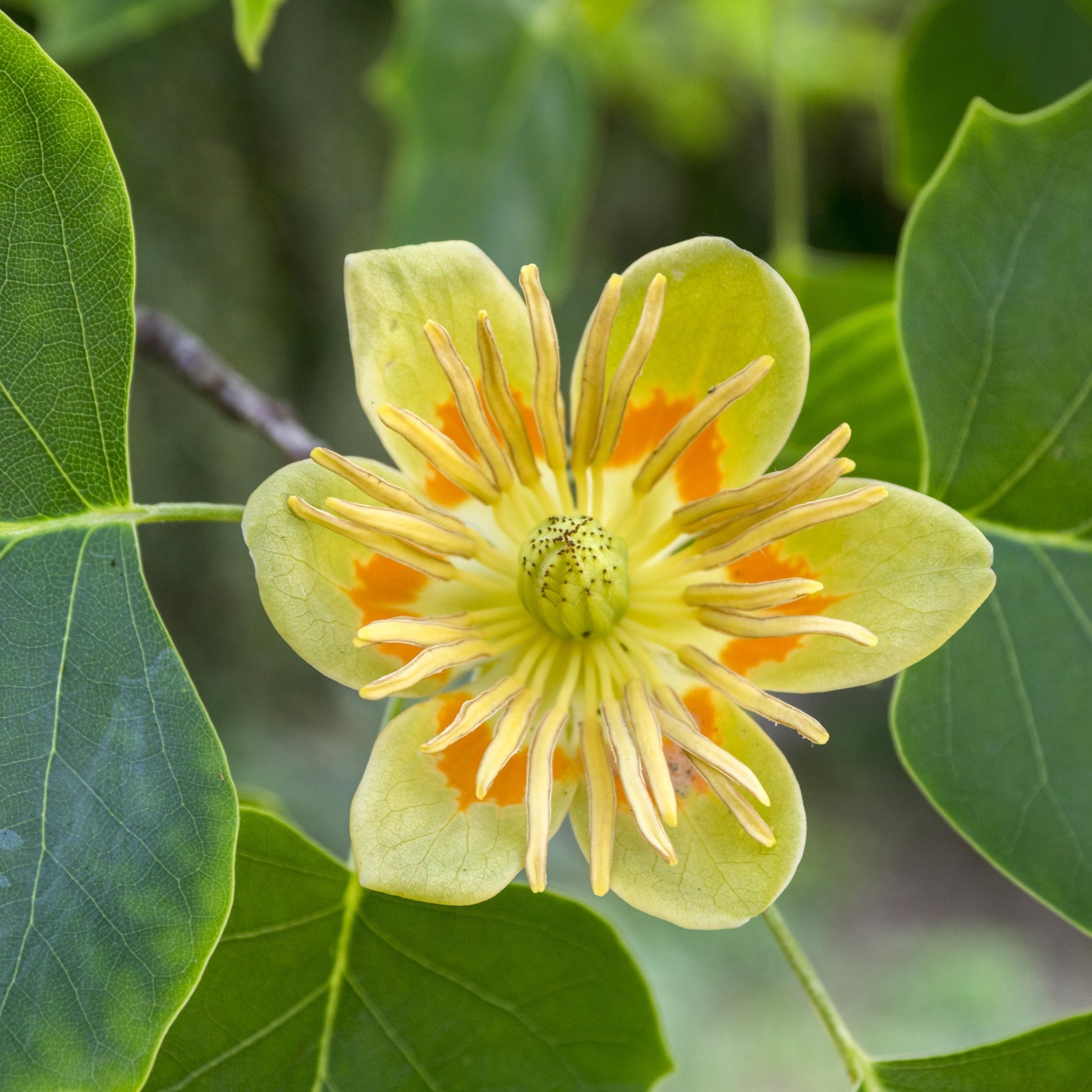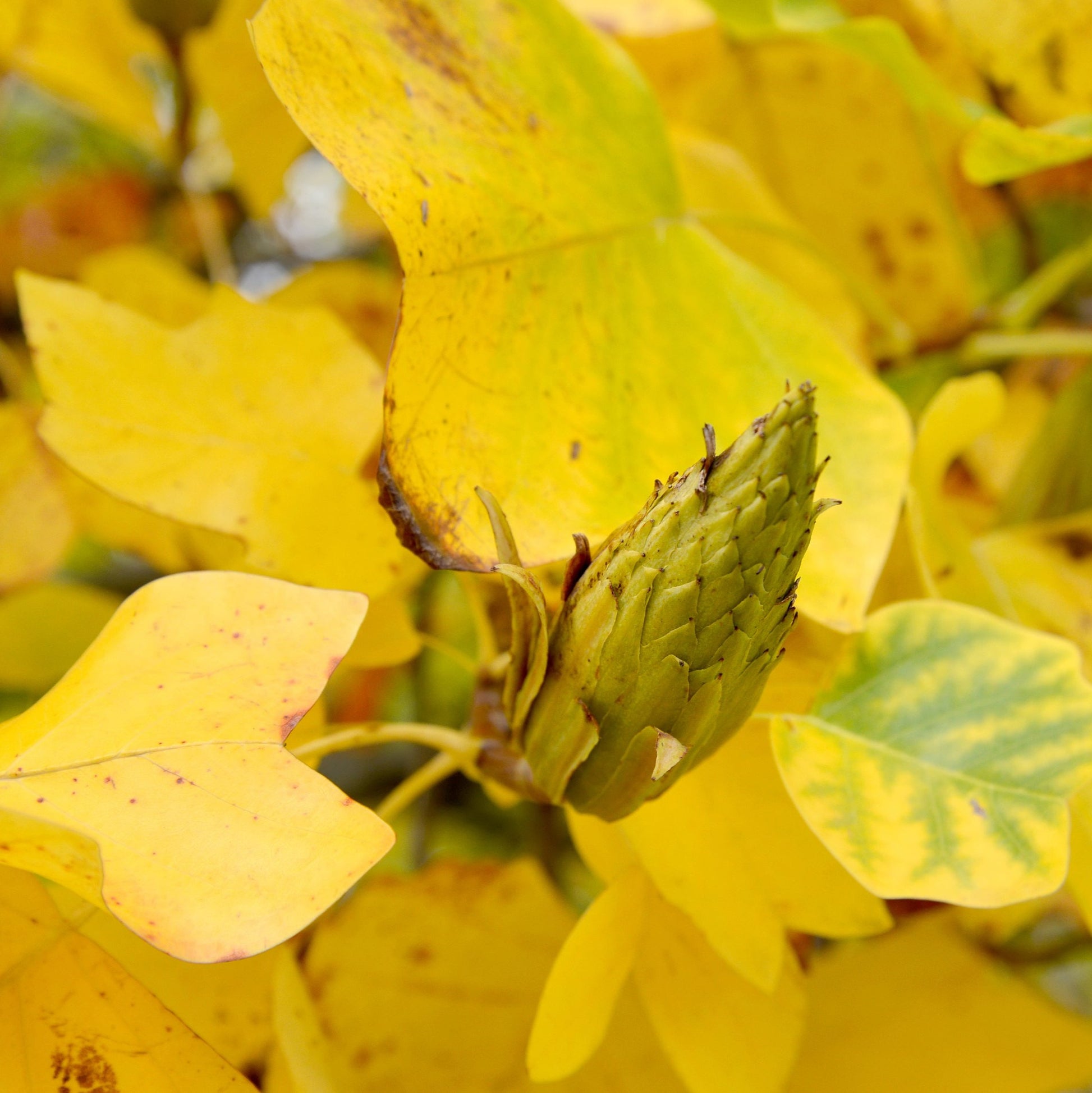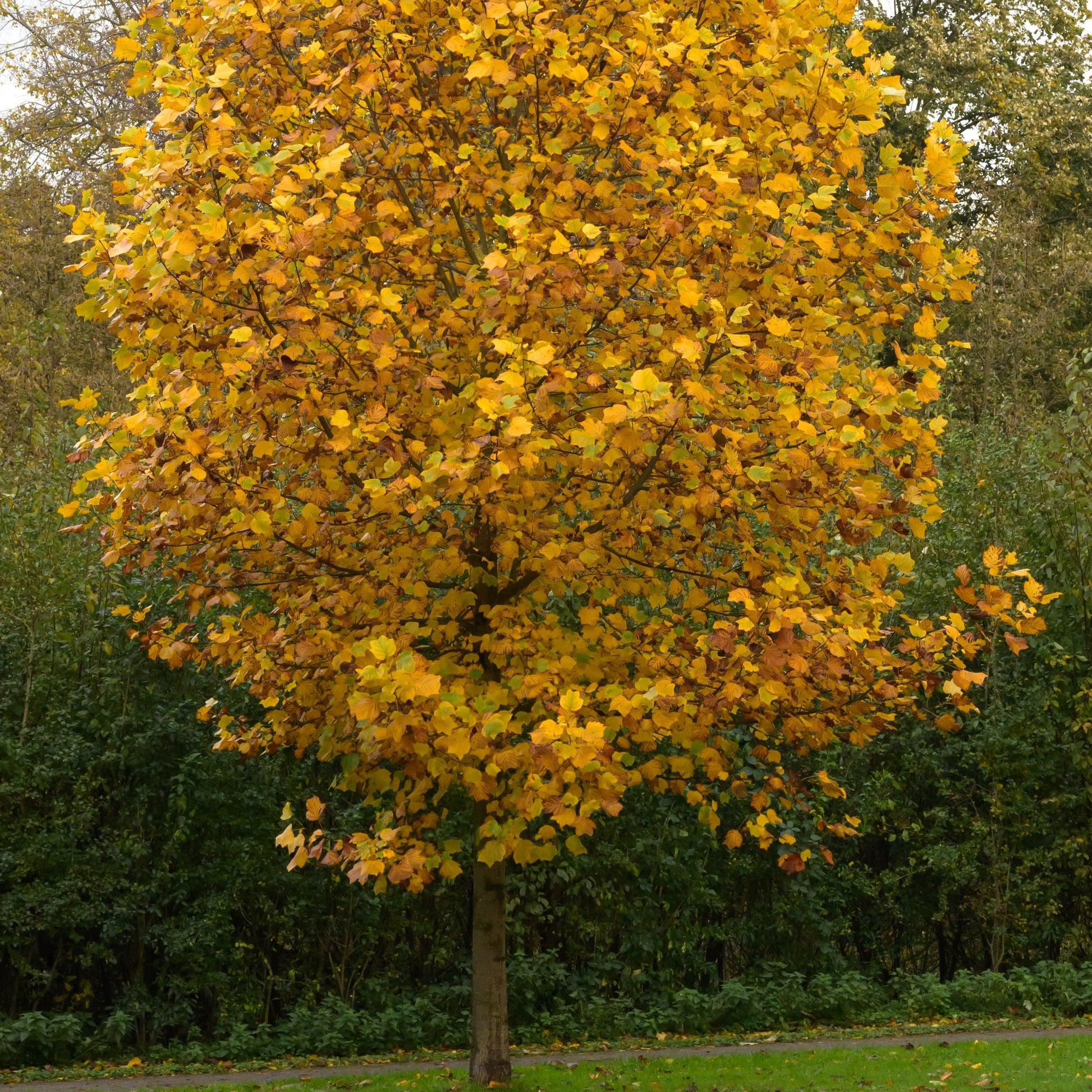Limited Quantities - Reserve Now For Fall
Tulip Poplar Tree
Tulip Poplar Tree
Couldn't load pickup availability
The Tulip Poplar Tree is a fast-growing, towering deciduous tree known for its distinctive tulip-shaped flowers, broad shade canopy, and adaptability to various landscapes. As one of the tallest native hardwood trees in North America, it is highly valued for its rapid growth, strong wood, and environmental benefits. With its resistance to pests and diseases, vibrant fall foliage, and ability to support pollinators, the Tulip Poplar is an excellent choice for large landscapes, parks, and urban planting
Tulip Poplar Tree
| Attribute | Details |
|---|---|
| Variety | Rooted |
| Botanical Name | Liriodendron tulipifera |
| Common Names | Tulip Tree, Yellow Poplar, Tulip Poplar |
| Mature Height | 70-90 feet (can reach over 100 feet in ideal conditions) |
| Mature Width | 30-50 feet |
| Growth Rate | Fast (2-3 feet per year) |
| Lifespan | 200+ years |
| USDA Hardiness Zones | 4-9 |
| Sun Preference | Full sun (6+ hours of direct sunlight) |
| Soil Type | Well-drained, loamy, sandy, or clay soils |
| Soil pH | Slightly acidic to neutral (5.5-7.5) |
| Water Needs | Moderate; prefers moist soils but tolerates short droughts |
| Flowering Season | Late spring to early summer (May-June) |
| Flower Color | Yellow-green with orange markings, tulip-shaped |
| Fall Foliage | Bright golden yellow |
| Wildlife Attraction | Bees, butterflies, hummingbirds, birds, small mammals |
| Growth Habit | Tall, pyramidal shape with a strong central trunk |
| Self-Pollinating? | Yes |
| Landscape Uses | Shade tree, street tree, ornamental planting, pollinator habitat |
| Maintenance Level | Low to moderate |
Environmental Benefits
🐝 Pollinator Magnet – Produces large, nectar-rich flowers that attract bees, butterflies, and hummingbirds, supporting local ecosystems.
🌳 Air Purification & Carbon Sequestration – One of the best trees for absorbing carbon dioxide, improving air quality and reducing pollution.
💧 Erosion Control & Soil Stabilization – Thrives in moist, well-drained soils, helping reduce soil erosion and stabilize slopes.
🌞 Fast-Growing Shade Tree – Quickly develops a broad, dense canopy, making it ideal for cooling urban and residential areas.
Pros & Cons
| Pros | Cons |
|---|---|
| Fast-growing and provides excellent shade | Large size requires ample space for full growth |
| Beautiful tulip-shaped flowers attract pollinators | Flowers and leaves may cause some litter in high-traffic areas |
| Highly resistant to pests and diseases | Prefers deep, fertile soil and may struggle in compacted urban environments |
| Tolerates a range of soils and climates | Shallow root system may interfere with sidewalks if planted too close |
| Vibrant golden fall foliage adds seasonal beauty | Can be sensitive to extreme drought conditions |
Planting & Care Guide (Bare Root)
- Spacing: Plant 30-50 feet apart for full canopy development
- Soaking: Soak bare root in water for 6-12 hours before planting
- Planting Depth: Dig a hole twice the width of the root system, ensuring roots are level with the soil surface
- Mulching: Apply a 2-3 inch layer of mulch to retain moisture and suppress weeds
- Pruning: Prune in late winter or early spring to shape the tree and remove weak branches
- Fertilization: Apply a slow-release fertilizer in early spring to encourage healthy growth
- Watering: Water regularly during the first year, then reduce as the tree matures
The Tulip Poplar Tree is a stunning, fast-growing, and ecologically valuable tree that provides shade, pollinator support, and year-round beauty. Whether planted as a shade tree, ornamental centerpiece, or urban landscape feature, this resilient and low-maintenance tree is a valuable addition to any outdoor space.
Share
